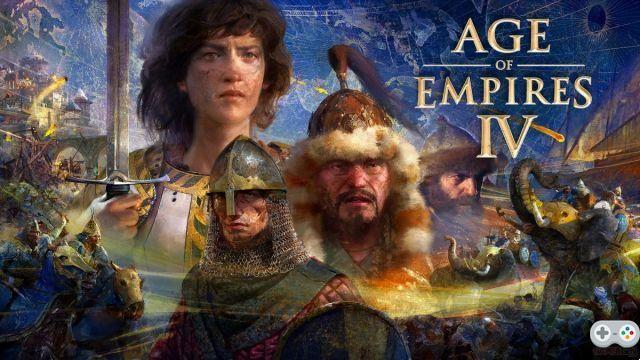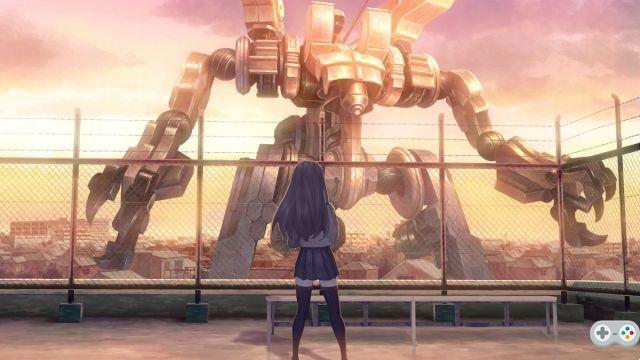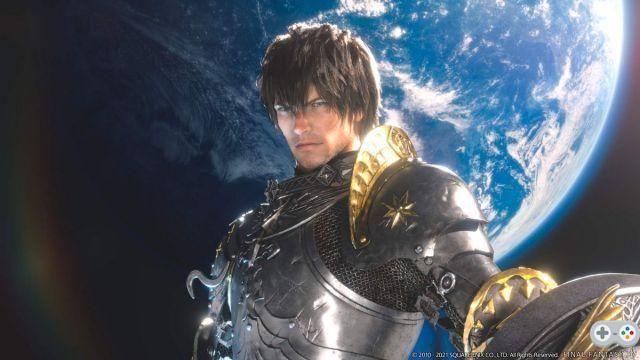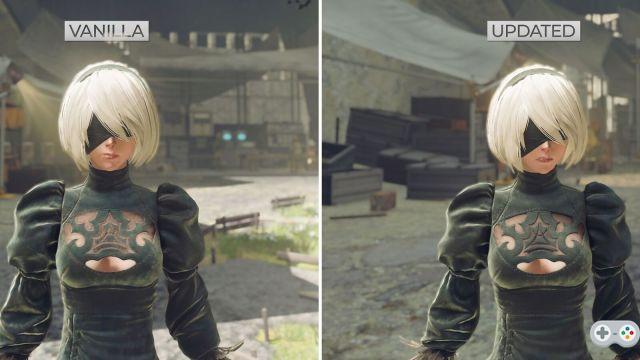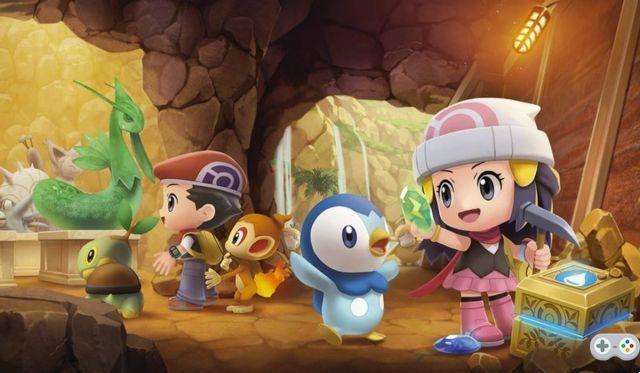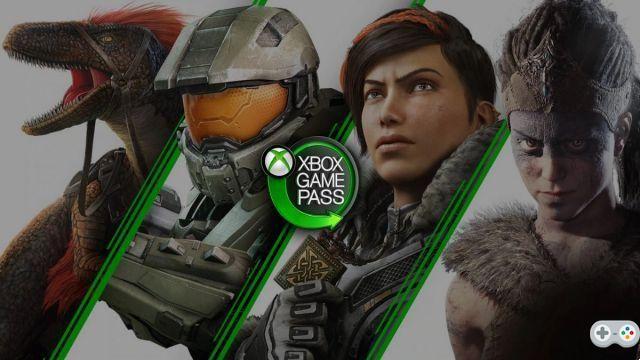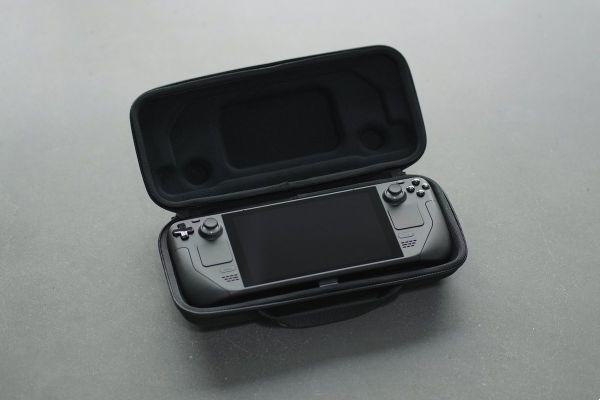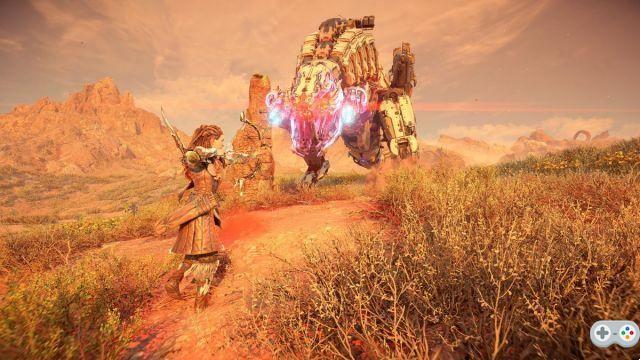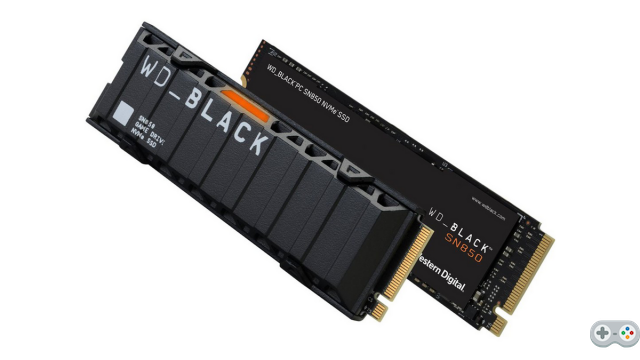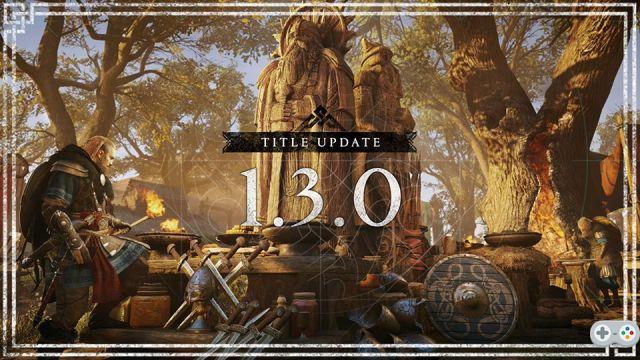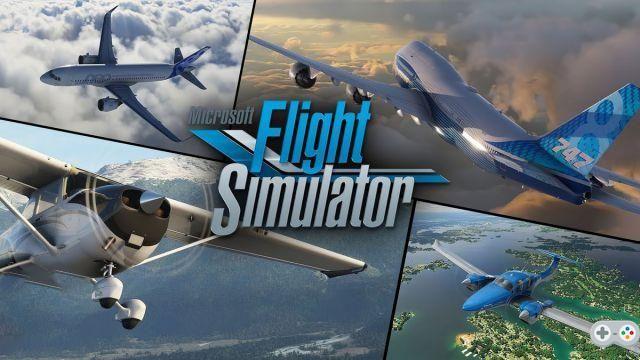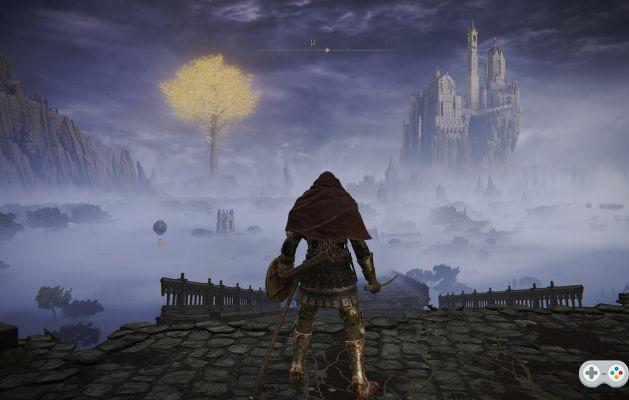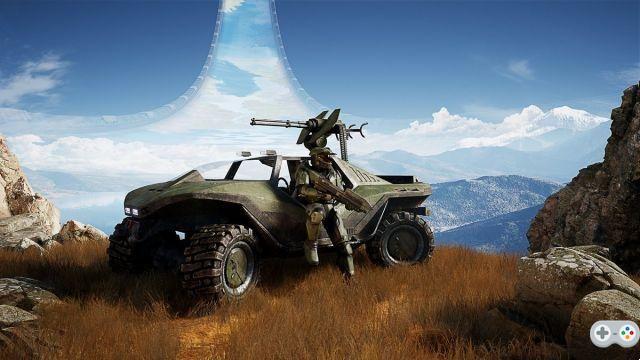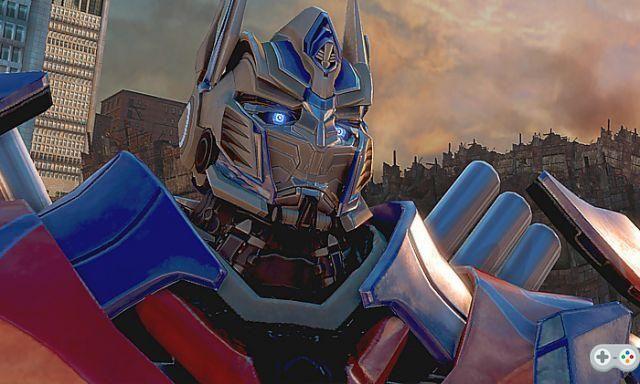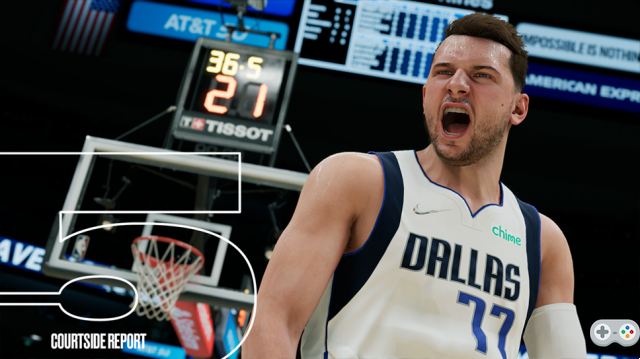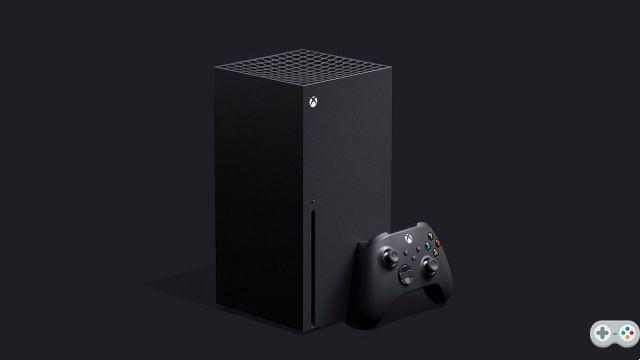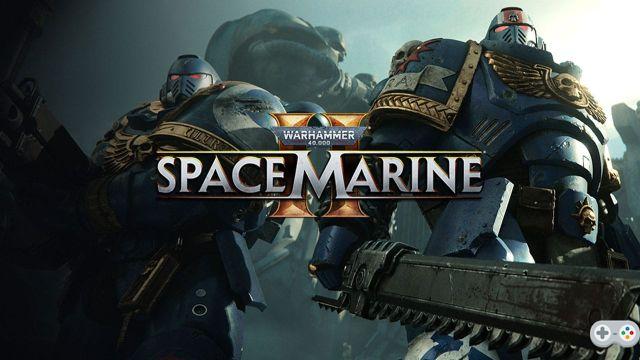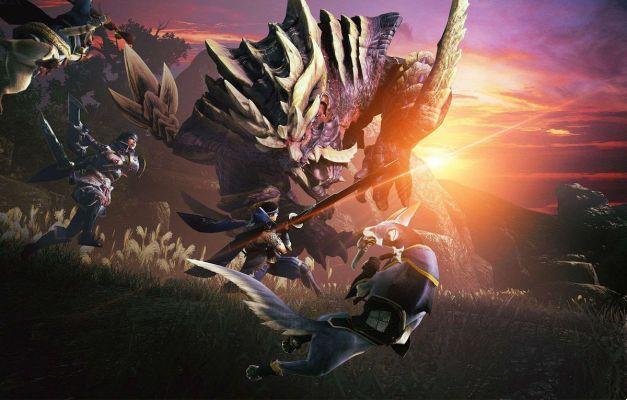
Still relatively confidential in our country, the Monster Hunter series is now starting to experience some success thanks to Capcom's efforts to bring it out into the open. After Monster Hunter World, which familiarized consoles and players with the pleasures of hunting, it's the turn of Switch players to take the plunge with a Monster Hunter Rise perfectly calibrated for Nintendo's portable.
8
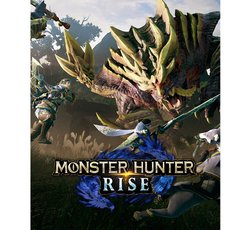 View PriceRead ConclusionMonster Hunter Rise
View PriceRead ConclusionMonster Hunter Rise
- The Filoptere, a novelty that makes combat and exploration more fluid
- The verticality of the levels
- The return of local multiplayer, perfect for hunting with friends
- An already plethoric content that will be enriched over time...
- Classic and quite uneven environments
- The ergonomics of the online game, abstruse as possible
- An extremely greedy game in portable mode (beware of the battery)
- … a pretty skinny endgame for the moment
Preparation before the Hunt on PC
Highly anticipated by players who cut their teeth on Capcom's successful Action-RPG franchise with the PC version of Monster Hunter World, Monster Hunter Rise is finally here (January 12 on Steam, priced at 59,99 euros)! We had the chance to try it a little in advance, in order to give you our impressions of this very solid port!
Curiously, the configurations required to enjoy the game smoothly are quite demanding. A quick reminder of our test configuration is therefore in order: RTX 3070 Ti, Ryzen 5 5600X, 32 GB of RAM and an M.2 NVMe SSD. We were able to enjoy the game in peace at 144 constant fps in 1p, all features and graphics options fully. And there are many !
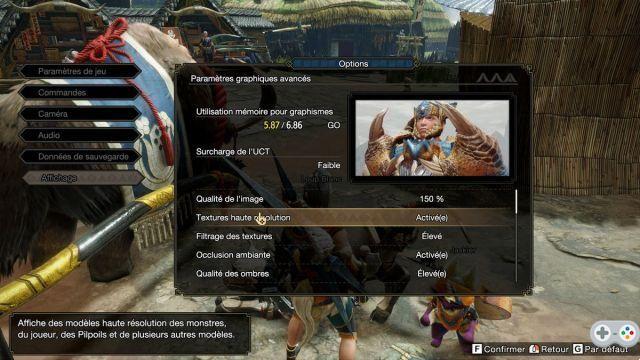
Support for ultra-wide screens, 4K definition, resolution scale, unlimited fps rate, high resolution textures, filters to personalize your experience, Monster Hunter Rise takes full advantage of the PC version to display itself in its best light. Same observation concerning the many loading times, almost nullified on PC if one is equipped with a good SSD.
JVFR
JVFR
If this PC version also allows itself to improve the keyboard / mouse combo controls compared to Monster Hunter World, the controller remains the device of choice despite everything. Some key combinations are indeed missing, unless you do improbable stretches to achieve a much more instinctive result on the controller. Or use macros, depending. The only notable advantage of the keyboard / mouse combo compared to the controller is however in aiming with ranged weapons or in navigation within the menus, which are necessarily more fluid.
Anyway, Capcom signs here a very high level PC port, although inevitably less beautiful than Monster Hunter World, given the basic material from the Nintendo Switch. PC players can therefore rejoice in advance: the experience will clearly live up to the long wait (almost a year anyway)!
Too bad cross-play and cross-progression between the two versions are not supported. Owners of the Switch version will therefore have to check out again if they want to enjoy the Monster Hunter Rise experience in its best possible form.
As a reminder, the PC version will have all the free content injected since the launch of the Switch version upon its release. The Sunbreak expansion, scheduled for this summer, will also be released simultaneously on both versions. But that's a story for another time, with probably another test!
After a first incursion at Nintendo with Monster Hunter Tri (and its abominable aquatic combat system) and various passages on 3DS (including a rather well done Monster Hunter 4), Monster Hunter is coming back to Nintendo with Monster Hunter Rise , the brand new canonical episode of the series. Benefiting from a large part of the work done on Monster Hunter World since the two titles share a parallel development, this MH Rise therefore starts on a very solid foundation. Better, because the Capcom teams have not rested on their laurels and have worked hard on a whole host of new features that come to refine a little more the formula inaugurated by World.
The only shadow to this ideal picture remains the choice of the Switch. As we know, the Nintendo console is far from being a monster of power or Monster Hunter, with its open, abundant environments and its gigantic monsters proves to be a bit resource-hungry. Is the Switch capable of supporting such an ambition? It is to this question and many others that you may ask yourself that we will try to answer in the lines below.
For the occasion, Clubic called on the crème de la crème of its monster hunters, from the series regular returning after a long break to the World veteran sharp as a blade, and sharp as a knife. Enough to get you a double light on this episode, over a test thought out and written with four hands and which we hope is as pleasant to read as it is complete. Good reading !
What is Monster Hunter exactly?
JVFR
Hidden Kamura
Who says new Monster Hunter, necessarily says new places, environments and characters to discover. With this Rise, Capcom has decided to take us to Kamura, a smiling little village nestled in the hollow of inviolable mountains, and strongly inspired by the aesthetics of feudal Japan and Kurosawa-style samurai films. As usual, you take on the role of the new kid on the block (or the new kid on the block, of course), a fresh-faced hunter who is determined to prove himself by going monster-savvy for a good cause. A task that could be easy if Kamura was not regularly plagued by a plague, the Calamity, which pushes the monsters around to throw themselves without rhyme or reason on the fortress that protects the city. Add to that the presence of a creature as legendary as it is fearsome, the Magnamalo, which comes to feast on monsters affected by the Calamity, and you have the starting point of your adventure.
On this point, Monster Hunter Rise is absolutely unoriginal by offering us once again the classic formula of the scourge that overwhelms a community and that you, the player, will have to counter by all possible means. And to do this, there won't be thirty-six solutions: you'll have to go monster hunting to strengthen yourself and be able to send that pesky Magnamalo ad patres. As the missions offered by the guild progress, you will be able to face increasingly formidable enemies. Old acquaintances of course, but also some new ones created for the occasion.
JVFR
The latter also bring real added value to the title by bringing more variety to the usual bestiary of the saga. The aesthetics chosen by the developers can be found in the design of these new monsters, which have more of a look at Japanese folklore than the traditional "dinodragons" of the beginnings. We must also salute the work done in general on the aesthetics of this episode. Each new monster or place encountered is introduced by a very well done short cinematic, partly taking up the codes of Kabuki theater (short sung dialogues) and the grain of film so particular of old Japanese cinema. What immediately plunge us into the atmosphere and lay the foundations of this new universe.
In addition to Kamura, Capcom has this time concocted five hunting grounds that will be unlocked as you progress through the story. If their global themes are very classic (an archipelago with a freezing climate, a desert filled with canyons, a mountainous forest…), their designs are rather successful. Each hunting area tells, in its own way, a little story that you will enjoy discovering as you explore.
The ice archipelago, for example, is largely occupied by the wreckage of a ship from the Hunters' Guild and the bones of a gigantic monster, witnesses of a titanic confrontation that we will enjoy imagining. The flooded forest, for its part, is a moist jungle concealing mysterious temples, and dominated by a stepped pyramid that the pre-Columbian civilization would not have denied. For the occasion, and thanks to the addition of the Filoptera which we will tell you about shortly, the hunting areas open up vertically, injecting a whole new dynamic into exploration, and making it possible to offer the player of striking panoramas.
JVFR
If the artistic direction of this new episode hits the mark, the technique is a little behind. It's no secret that the Switch is far from being a monster of power, and in game, it's hard not to realize it. When docked, the textures are sorely lacking in sharpness, and are generally quite runny. Near and distant shadows suffer from a rather unpleasant dotted effect, and the display distance is not at its best, which is a shame given the effort made on verticality. In portable, these problems fade a little, but the size of the screen sometimes becomes problematic because of the large amount of information present on the HUD.
We will also regularly note framerate drops, whether caused by the number of monsters and effects present on the screen, or the simple presence of dripping water in the surroundings. To make it short, Capcom probably wanted to do too much with this episode by pushing the Switch beyond its strengths. Too bad, the game would probably have gained both in beauty and readability with a slightly less "realistic" DA and more adapted to the technical possibilities of the Nintendo console.
JVFR
From the biome to the heart - the opinion of Naïm
For once, Capcom has accomplished a technical feat on a portable console. Admittedly, the transition to a resolution close to 720p on the big screen stings a bit when you've gotten used to the high resolutions of World, but we gladly forgive these shortcomings when we see the rich open areas that Capcom manages to offer us on the small Switch. We will still note a better rendering in portable than in docked thanks to a smaller screen and a lower pixel density. On the art direction side, the game borrows from World but also from the very recent spin-off Monster Hunter Stories to offer smoother lines to characters and monsters without falling into the cartoon.
The themes of the zones are not original and remain locked in the straightjacket of the series (forest, snowy tundra, volcano, desert, swamp), a very regrettable choice with the variety of landscapes that Japan can offer by way of 'inspiration. We can't help but be a little disappointed by the lack of originality of the zones after the effort World has made on this point. Although less ambitious in terms of area, Rise's adventure locations compensate with great verticality and many nooks and crannies to explore. The game therefore presents us with 5 zones, each with its specificities in terms of endemic species, available resources and tools made available to hunters. Three of the five biomes are reinterpretations of hunting areas from the game's third generation (Tri and Portable 3rd). The most nostalgic will be able to recognize them quite easily as certain similarities persist despite the facelift they received to adapt to the increased mobility of the hunter.
On the Filoptera of the razor
As we mentioned a little above, this Monster Hunter gives pride of place to verticality by opening up these levels to heights never before reached. It's the Filoptera, a kind of organic grapple made from insects that will take care of making you climb the walls. A real toolbox for the budding climber, the Filoptere can easily propel you towards a wall or a distant place, hold you back during a fall or even give you the opportunity to run on the walls like the first ninja to come, arms in the winds ( fans of Naruto or Area 51 will appreciate).
The possibilities of movement offered by the Filoptera constitute one of the great breaths of fresh air of this episode by offering unprecedented freedom and maneuverability in a Monster Hunter. The regulars of the series will undoubtedly be the first delighted with this novelty which finally leaves the game of rigidity to which it had accustomed us in the past.
Efforts to improve movement are not limited only to this Filoptera, since each Hunter now has a new pet, the Palamute, which not only intervenes in combat, but can also act as a mount for riding. at the four corners of each environment. So finished the endurance gauges which drain in a few minutes and the paces of turtles. From now on, it is possible to ride your mount with the simple press of a button, then to propel yourself in the air to reach the heights in order to climb a wall and finish with a magnificent leap of the angel on the monsters that await you. tens of meters below. The feeling of freedom and fluidity have never been so vivid and it feels good.
JVFR
However, the interest of the Filoptera is not confined solely to movements in the environment. Indeed, these little critters are also faithful allies in combat. For each of the weapons available in the game (and there is something for everyone), it is possible to discover new movements using the Filoptera's abilities, whether to propel yourself towards the hunted monster and deal it a series of blows , or temporarily immobilize it to gain additional damage. These "silk ties" attacks also make it possible to progress more quickly the gauge leading to the Ride of Wyvern, a component of the Hunt which is making its big comeback here in a more accomplished version, and capable of truly turning the tide. 'a hunt. Once the beast is stunned, you can jump on its back and ride it for a short time, giving you the option of throwing it against walls to inflict serious damage on it, or more interestingly, making it attack other monsters. who roam the area.
The attack skills linked to the Filoptera are an essential component of the fight in this Rise as they prove to be powerful and make the action more fluid. Especially since the Filoptere can also be used for quick dodging purposes, which can sometimes get you out of a very bad step depending on the speed of your opponent. Once mastered, these skills come to complete the already very complete arsenal of each weapon and transform the fights into real choreographies, an incessant ballet of blows and dodges which provide a real feeling of power controller in hand. Everything is not perfect yet, and some manipulations still require twisting your fingers in all directions, but damn it, it feels good to see the gameplay of Monster Hunter moving in the right direction.
JVFR
Give back to his arms what belongs to his arms
- Naïm's opinion
Each Monster Hunter game is an opportunity for developers to iterate on the formula and make minor changes to seventeen-year-old gameplay that players are getting to know well. Rise is no exception and builds the gameplay of its fourteen weapon types with the previous game as a base. Each weapon therefore has a wealth of knowledge and subtleties that you will need to master if you want to complete the game. Without being exhaustive, there is something for everyone, whether you are the type to slice with a saber, strafe all over the place or just strike with a hammer, Monster Hunter has the weapon for you. If you are afraid of making the wrong choice, rest assured: you can switch from one weapon to another when it suits you (even in the middle of a hunt). Nevertheless, the complexity of the weapons and the farm necessary for their manufacture will make it recommended that you use only one type of weapon for the first tens of hours of play, the time to get your feet wet.
The novelties brought by Rise on weapons are quite uneven from one hunting tool to another. The hunting horn, for example, has been completely reworked to make it more accessible, while other weapons such as the insectglaive have not changed except that certain actions are now performed using the filoptere.
The filoptera by the way, let's talk about it! In combat, this allows you to use very different skills from one weapon to another. Each weapon can equip two "silk bonds" skills that consume one or two gauges from your spinneret and deal "bind" damage to the monster. This type of damage can also be inflicted by air attacks and blows from other monsters. Once a sufficient amount of link damage has been inflicted, you can mount the monster using your spinneret to force it to attack other monsters or run into elements of the scenery.
Rise also introduces a substitution talent system. You will be able to modify the end of certain combos and your “silk bonds” skills. The feature is welcome since it will allow you to break the routine that can set in in combat after a few dozen hours of play with the same weapon. It must still be noted that we quickly go around the skills offered. However, we imagine that this system will take on its full importance when Capcom inevitably releases an extension and new movements for this Monster Hunter Rise as it did for the previous opus.
The worst calamity after a stupid general...
JVFR
The other great novelty brought by this Monster Hunter Rise lies in the Calamity, this scourge which threatens Kamura at regular intervals, and which is reflected in the game by a new type of mission. Quickly introduced, they will send you to defend the fortress that guards access to the village against hordes of monsters driven mad, and determined to demolish everything that the inhabitants of Kamura have managed to build. In game, this translates into a sequence strongly resembling an improved Tower Defense in which you will be involved.
At the beginning of each mission, you can move freely in the fortress to place weapons and other traps on given locations. Knowing that these locations and resources are limited, it is up to you to decide which strategy to adopt. And while some weapons at your disposal act automatically, others will have to be wielded with your hand, involving you in the process all the time. As the onslaught progresses, your facilities will grow in power and you'll unlock more advanced gear that you'll have to hand-place as the monsters rampage around you until you've fended off all of these beautiful people.
In addition to the reasons invoked by the scenario, these Calamity missions above all allow you to collect special materials which will be used to make the most of your weapons by adding Calamity abilities (elemental bonus, attack bonus, etc.). If the idea is nice, they also quite dispensable. Without being painful, this game mode lacks a bit of interest, and the action is confused and we will often find ourselves running from one point of the fortress to another to place the new machines obtained during that the monsters present in the arena take malicious pleasure in ignoring the other defenders to come and eat us shamelessly. And while it's possible to go take on the Calamity with other players, that only adds to the confusion and aggressiveness of the monsters, creating a happy mess that borders on illegibility.
JVFR
"Farm the door on leaving" - Naïm's opinion
It is necessary to remember that farming is an integral part of Monster Hunter's DNA. Rise is no exception and has an impressive number of crafting materials. However, the game does its best not to intimidate the players. You will sometimes have to redo the same hunt several times during your progression to obtain the materials necessary to craft your future weapons and armor, but Capcom has done its best to eliminate the friction that players may encounter during a farming session.
By reducing the number of materials needed for equipment compared to previous games, the developers have simplified the "grind" that many players blame the series for. Additionally, the "Wish List" introduced in World is making a comeback. As a reminder, this feature allows you to create a digestible list of the materials needed to craft a piece of equipment and to be able to follow the progress of your task without having to return to the blacksmith or your inventory. You will therefore be notified of the achievement of your objective as soon as you obtain all the materials. The game also introduces the compendium. A tool that we were pleasantly surprised at and that will help you better target the materials you are looking for. A real in-game wiki, this menu shows you the percentage chance of obtaining valuable monster parts depending on the course of the hunt (capture, damage to certain body parts, etc.) as well as the detailed weaknesses of each of the critters. A relatively complete tool that will prevent you from drawing Google all the time. All these new features make farming much less painful than in previous games and we have rarely been frustrated by this task.
Calamities will be essential for players who want to create the best build possible since several materials are exclusive to them and allow you to customize your weapons. Jewels are also making a comeback and can be socketed to add new passive skills to your armor and weapon or improve existing ones. As with any good RPG, expect your farm time to increase exponentially depending on how much customization you want to bring to your build. The toughest hunts in the game will require you to gear up accordingly with handpicked gear and passive talents based on the beast that will have you in its sights. So be warned that you will not see the end of the game without regularly improving your gear.
Gettin’ Jaggi with it
As we have already mentioned above, and if we exclude the arrival of Filoptera and Calamity mode, this Monster Hunter Rise offers us an experience in the line of these predecessors with a double progression. Here, it will be necessary to distinguish the progression of Kamura, which is the equivalent of the single player, from that of Grand Camp, which includes everything related to multiplayer. In both cases, you will have to hunt the monsters present in the bestiary of this episode one after the other until you can claim the highest rank of hunter. A challenge that will continually progress through particularly demanding hunts that will require carefully thought-out equipment and the meticulous preparation that is the charm of the series.
JVFR
With the quests of Kamura, the player will be able to familiarize himself gently with the main mechanics of the game, the hunt and the various monsters of the bestiary and above all prepare for the real challenge of the game which lies in the quests of Grand Camp. In a way, you have to see them as a giant tutorial to prepare for the difficulty of the game in multiplayer. And it's not an empty word, because it's really only after having met all the challenges offered by Kamura that the real game begins. The best hunts, the rarest materials, and the real challenge reside in Grand Camp, and you better be prepared before you venture there.
Preparation, as always, is key in this Monster Hunter. Besides choosing the most suitable weapon and armor for the upcoming fight, knowing the hunting ground is essential to triumphing over your prey. Very quickly in the game, you will get your first Florelet, an item that grants various attack and defense buffs, as well as life and stamina when hunting. To get such buffs, you will need to collect pollen from birds scattered all over each area.
Knowing the corners most conducive to such collection is therefore essential to benefit from these welcome power supplements. Also be aware that each area has many elements capable of giving you temporary stat bonuses, and no one will spit on a 50% attack buff, a reduction in stamina consumption or a free full of life.
Add to that the existence of territory wars between monsters, which you can exploit to your advantage to train the behemoths, and you get a complete, complex and living ecosystem with which you will have to deal constantly to triumph. As you hunt, you will learn to find your way more easily in the various environments, find your own routes and shortcuts to boost your statistics, and learn to decode the behavior of the monsters you hunt, and this is also in this that lies a much of the fun of a Monster Hunter.
JVFR
The first time you face a critter, the fight is often painful, awkward and long. Then over the fights, you optimize your strategy, learn to read your opponent's attack pattern, and find ways to counter them until the fight is a mere formality. And we're not going to lie to each other, this feeling of mastery is perfectly exhilarating.
The bestiary comes out of the locker room - Naïm's opinion
After being sidelined when Monster Hunter: World was released for technical reasons, leviathans are making a comeback in Rise. Introduced in the third generation of games, this variety of aquatic monsters resembling Japanese dragons fit perfectly into the aesthetics of the game. Besides, practically all monsters, new and old, fit very well into the artistic direction of the game, most have even benefited from a minor facelift. The game currently has just over thirty monsters, including eleven original creations specific to this episode. It's not a lot and the old opuses have accustomed us to more… World had for example introduced 17 new monsters during its incursion on home consoles and PC. In addition, of the thirty-three monsters that populate the lands of the game, many are low-ranking monsters. The result is a reduced difficulty and a glaring lack of variety in the last part of the game. The lack of Elder Dragons, these almost divine creatures which constitute the most difficult challenges for hunters, is particularly felt.
Territory Wars that also make a return are quite rare and we can count the ones we've witnessed on the fingers of one hand. It is impossible to say if these are just less present or if we were not lucky enough for the conditions to be met during our hunts. Wyvern rides act as a replacement and allow you to be at the forefront of a fight between your target and another monster.
JVFR
Hunters of all countries, unite!
As you will have understood, Kamura and his quests are only there to prepare you for the deep end that is Grand Camp and its much more challenging quests. If it is possible to tackle it alone for a maximum challenge, the monsters generally benefiting from increased statistics, it is with several that the game takes on its full meaning. Because Monster Hunter is a game that takes on its full meaning when you form your Hunter team, prepare your weapons and go track down a gigantic monster for a few tens of minutes.
And on this point, Rise does not disappoint. Grand Camp indeed serves as a hub for all things multiplayer. Here you can start quests with your friends, create a session to welcome them, or simply consult the quests in progress and join them in a jiffy.
Well almost, because it will first be necessary to understand how all this mess works. In addition to the obligation to have a subscription to Nintendo Online, you will also have to go through a whole bunch of menus with frankly questionable ergonomics before being able to join a multiplayer session. After that, you will also have to take the time to discover how to simply create or join a mission, which will not be easy.
If we were able to try out some very nice multiplayer sessions, let me tell you that the launch of the first of them was chaotic to say the least. Once this pitfall has passed, however, the game takes on its full meaning and we will enjoy facing the toughest challenges of the game with a troop of veteran Hunters.
JVFR
The real good idea of this episode, however, lies in the return of the online mode on the local network. The oldest among you will no doubt remember this feature which made the great hours of gaming on PSP or 3DS, allowing players to meet together physically to share a common gaming session. Thanks to the Switch, it's possible again and that's great news, as the game benefits from being shared with others. The only downside is the autonomy of the Switch in portable mode, especially on the first models, which should greatly limit the possibilities of embarking on game sessions exceeding a few hours.
You miss a beast and everything is depopulated - Naïm's opinion
As we said, the elder dragons, a class of monster that often constitutes the endgame of Monster Hunter games, are almost absent from the game. Perhaps the COVID has impacted the development of the last segment of the game? But the conclusion remains the same: players will quickly get bored once the main quest is over with only a few calamities to eat. Note also the absence of the Hunter Rank (RC) system which allows, by increasing it, to unlock the endgame content usually present in Monster Hunter games.
Fortunately, all is not just despair since Capcom has planned several updates after the game's release to complete the endgame, starting with the return of the Chameleos and several other monsters in April. We can also expect an extension within a year that will add the master rank, dozens of new monsters to hunt and new gameplay.
Monster Hunter Rise: Clubic's opinion
Kevin's review
By taking up the outline of Monster Hunter World and bringing in some well-felt novelties, particularly in terms of exploration, Capcom gives us here an excellent episode of Monster Hunter which is gradually beginning to free itself from the heaviness inherent in the series. The choice of the Switch, which comes with the technical limitations inherent in the Nintendo console, is however ideal, and in perfect harmony with the DNA of the series. Because Monster Hunter is above all a game that can be enjoyed by several people, shared between friends or with strangers for the time of a hunt. The ability to play in portable mode and create games on the fly like in the great era of gaming on PSP, is one of the best ideas of this episode. It would not be surprising to see impromptu meetings between hunters flourish after the release of the game (in compliance with barrier gestures and other health instructions of the moment, of course).
For the rest, it is difficult to find reason to criticize the choices made by the game teams for this episode. If we except the relative technical weakness of the Switch, and some reading problems in certain environments, the service offered by this Monster Hunter Rise is very pleasant. The verticality of the levels, the DA inspired by Japanese folklore and the codes of Japanese cinema, the bestiary… everything fits together perfectly to offer a smooth gaming experience, where pleasure outweighs frustration. Some will tell you a little too much, the difficulty being a little lower than in previous episodes (it just comes a little later than usual, don't worry). All in all, it's a great entry into the series that doesn't leave the regulars on the sidelines, and it was no small feat to achieve.
Naim's review
Rise is probably the most universal game in the series. A compromise that invites old-school hunters, players that World has seduced as well as Switch owners who have not deigned to give the series a chance to meet under the banner of Kamura. This new opus makes the license more accessible than ever without losing its essence. The artistic direction, the technique and the gameplay create a coherent whole and give us this desire to come back to it continually for a new hunt. We see that the game was designed from the very beginning for Nintendo's hybrid as it is so easy to launch the game and make significant progress, even over a thirty-minute session. Everything is done so that you can concentrate on the heart of the game, which is hunting.
Like many gamers, we can't wait to rediscover the joys of local multiplayer that were lost with Monster Hunter World. More experienced players will be advised to wait for future updates before checking out, as the content dwindles late in the game. , will be diligent on the part of Capcom. The cast of monsters remains convincing despite certain shortcomings and we really hope that Capcom has some surprises for us for the months to come.
Monster hunter rise8
Perfect synthesis between the modernity brought by World and the philosophy (sometimes a bit archaic) carried by past episodes, Monster Hunter Rise succeeds in its balancing act brilliantly. Rich and complete but affordable, it is a perfect entry point, not free from flaws, to discover this fantastic series.Most
- The Filoptere, a novelty that makes combat and exploration more fluid
- The verticality of the levels
- The return of local multiplayer, perfect for hunting with friends
- An already plethoric content that will be enriched over time...
The lessers
- Classic and quite uneven environments
- The ergonomics of the online game, abstruse as possible
- An extremely greedy game in portable mode (beware of the battery)
- … a pretty skinny endgame for the moment




